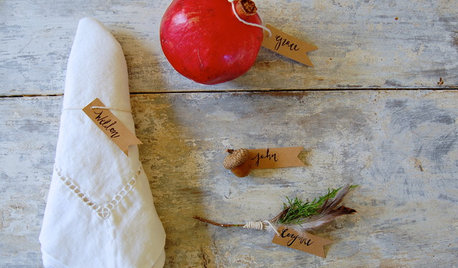Any ideas on these tips from Field Roebuck's rose book?
strawchicago z5
12 years ago
Related Stories

FUN HOUZZEverything I Need to Know About Decorating I Learned from Downton Abbey
Mind your manors with these 10 decorating tips from the PBS series, returning on January 5
Full Story
LIFEYou Said It: 'Don't Use Your Phone' and Other Tips of the Week
Memorable tips, tricks and quips from around Houzz this week. What are yours?
Full Story
GARDENING GUIDES10 Tips to Start a Garden — Can-Do Ideas for Beginners
Green up your landscape even if you're short on time, money and knowledge, with these manageable steps for first-time gardeners
Full Story
WORLD OF DESIGNEngland’s Most Famous Garden Designer Has These Tips for You
Lancelot 'Capability Brown' was born 300 years ago, but his ideas about naturalistic landscape design may be more relevant than ever
Full Story
BEDROOMS10 Tips for a Soothing French Country Nursery
Joyous but restful, soft French country style is a natural choice for baby's bedroom
Full Story
WORKING WITH PROS7 Tips for Making Contractors Your Allies
For a contractor as vested as you are in your home project's success, follow these time-tested techniques from a professional designer
Full Story
FEEL-GOOD HOME12 Very Useful Things I've Learned From Designers
These simple ideas can make life at home more efficient and enjoyable
Full Story
BEDROOMSDesign It Like a Man: Tips for Single Guys Planning a Bedroom
What guys should consider — aside from the Xbox — to design a bedroom that's comfortable, stylish and accommodating
Full Story
TRANSITIONAL HOMESHouzz Tour: A Happy-Trails Home on a California Field
Horse-loving homeowners look to barns and equestrian references for their light and bright new build
Full Story
LIFESlow Living 101: Tips for Turning Off the Chaos
It may feel as though you're too busy to slow down and enjoy life. But even little changes can have a big effect
Full StoryMore Discussions







roseseek
jerijen
Related Professionals
Ashburn Landscape Architects & Landscape Designers · Horsham Landscape Architects & Landscape Designers · Mountain Brook Landscape Architects & Landscape Designers · Amesbury Landscape Contractors · New Berlin Landscape Contractors · North Highlands Landscape Contractors · Panama City Beach Landscape Contractors · Raytown Landscape Contractors · Conroe Swimming Pool Builders · Roseville Swimming Pool Builders · San Dimas Swimming Pool Builders · Colorado Springs Siding & Exteriors · Derry Siding & Exteriors · East Brunswick Siding & Exteriors · Waukegan Siding & Exteriorsroseseek
cath41
hoovb zone 9 sunset 23
anntn6b
Campanula UK Z8
jerijen
hartwood
sammy zone 7 Tulsa
seil zone 6b MI
roseseek
strawchicago z5Original Author
michaelg
plantloverkat north Houston - 9a
sammy zone 7 Tulsa
strawchicago z5Original Author
Campanula UK Z8
jon_in_wessex
strawchicago z5Original Author
strawchicago z5Original Author
roseseek
strawchicago z5Original Author
Campanula UK Z8
rosefolly
strawchicago z5Original Author
lou_texas